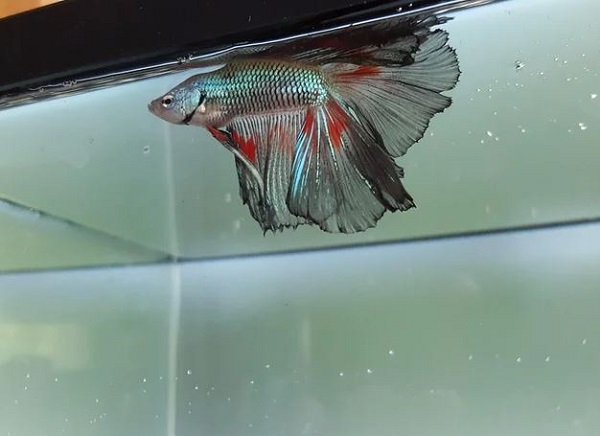Swim bladder disease is a common health problem seen in aquarium fish. The condition affects the fish’s ability to maintain balance and control buoyancy. Affected fish may float uncontrollably to the top, sink to the bottom, or swim on their side. For many aquarium keepers, the question is simple: how to cure swim bladder disease and prevent it from becoming a long-term issue.
To address chronic swim bladder problems, it is important to understand the causes and then apply the right treatment methods. Let us look at the most effective options.
Identify the Cause First
Swim bladder issues can arise from several factors. Constipation due to overfeeding is one of the most frequent reasons. Infections caused by bacteria or parasites may also affect the bladder. In some cases, physical injury or genetic defects are responsible.
Before trying any treatment, observe the fish closely. Note changes in behavior, appetite, and swimming pattern. By doing this, you can decide on the most appropriate method to restore health.
Adjust Feeding Habits
One of the easiest treatments for swim bladder problems is diet adjustment. Overfeeding or feeding the wrong type of food can lead to digestive blockages that press on the bladder.
Fix
- Stop feeding the fish for 24 to 48 hours. This fasting period helps clear the digestive tract.
- After fasting, provide small pieces of cooked, skinned peas. They act as a natural laxative for fish.
- Avoid floating pellets that swell in the stomach. Use sinking foods that reduce excess air intake.
These changes are often enough to resolve mild or recurring swim bladder issues related to diet.
Improve Tank Conditions
Poor water quality can worsen or trigger chronic swim bladder problems. Stress from ammonia spikes or low oxygen levels weakens the fish, making them more prone to infections.
Fix
- Test the water regularly for ammonia, nitrite, and nitrate levels.
- Perform partial water changes at least once a week.
- Maintain a stable temperature suitable for the fish species.
- Use proper filtration to keep the water clean and oxygenated.
A clean and stable environment helps reduce stress, giving the fish a better chance to recover.
Treat for Infections
If dietary changes and clean water do not solve the issue, infection could be the cause. Bacterial and parasitic infections can inflame the swim bladder and cause long-term damage.
Fix
- Isolate the affected fish in a separate hospital tank.
- Use an appropriate antibacterial or antiparasitic medication available at aquarium stores.
- Follow the dosage instructions carefully.
- Continue treatment for the full recommended course even if the fish shows improvement early.
Medication should always be used as a last step after ruling out simple causes like diet and water quality.
Consider Epsom Salt Baths
Epsom salt baths can help reduce swelling and pressure in fish suffering from chronic swim bladder issues. They are safe when applied correctly and are often used alongside other treatments.
Fix
- Prepare a separate container with conditioned water.
- Add one teaspoon of Epsom salt per gallon of water.
- Place the fish in the bath for 10 to 15 minutes.
- Return the fish to the main or hospital tank afterward.
Repeat this treatment daily for a few days if needed. The salt acts as a mild muscle relaxant and may relieve pressure around the bladder.
Support Long-Term Recovery
Fish that suffer from chronic swim bladder disease may require ongoing care. Preventing relapses is as important as curing the condition.
Fix
- Feed smaller portions multiple times a day instead of one large meal.
- Rotate the diet with high-quality flakes, sinking pellets, and occasional vegetables.
- Avoid sudden changes in water parameters.
- Keep stress levels low by limiting aggressive tank mates.
By maintaining consistent care, many fish recover fully and live normal lives even after repeated bladder problems.
When Replacement is the Only Option
In rare cases, if the issue is genetic or the damage is permanent, the fish may never fully recover. While treatments can improve comfort, they may not restore normal swimming. At this point, the decision depends on the overall quality of life of the fish.
Conclusion
Swim bladder disease may seem severe, but most cases can be treated with simple methods. The key is to identify the underlying cause and apply the right fix. From diet adjustments and improved tank conditions to medications and salt baths, there are multiple ways to address the problem.
By following these approaches, you will have a clear answer to how to cure swim bladder disease and give your fish the best chance of recovery.


